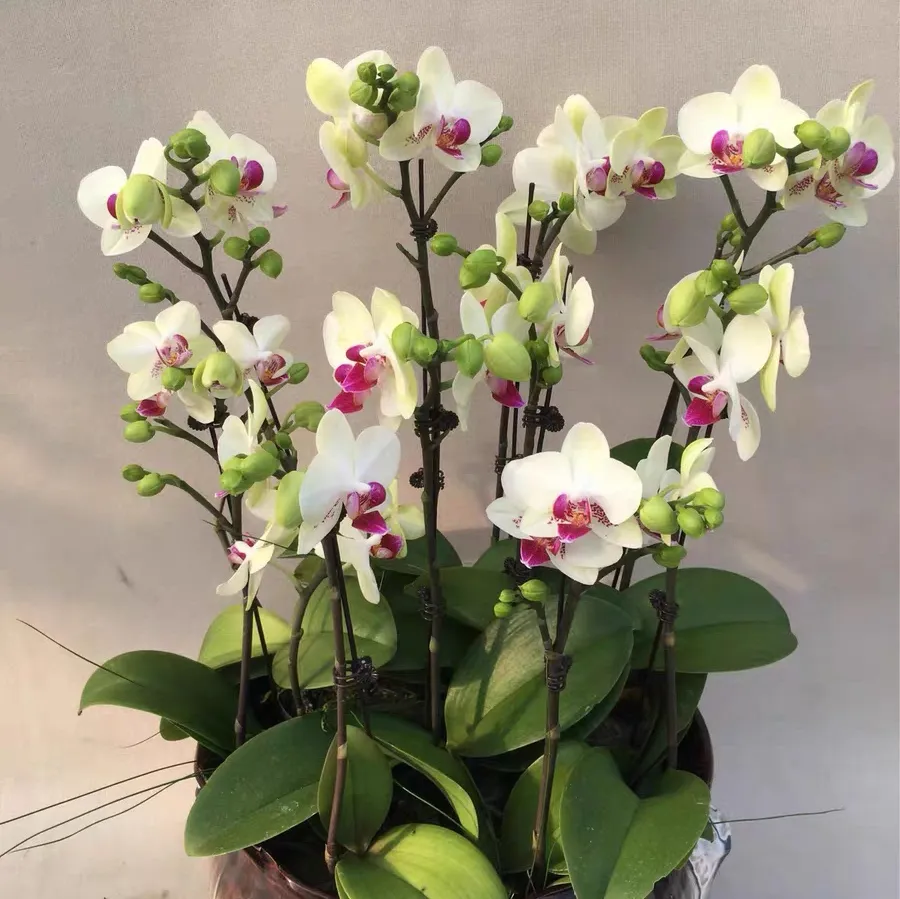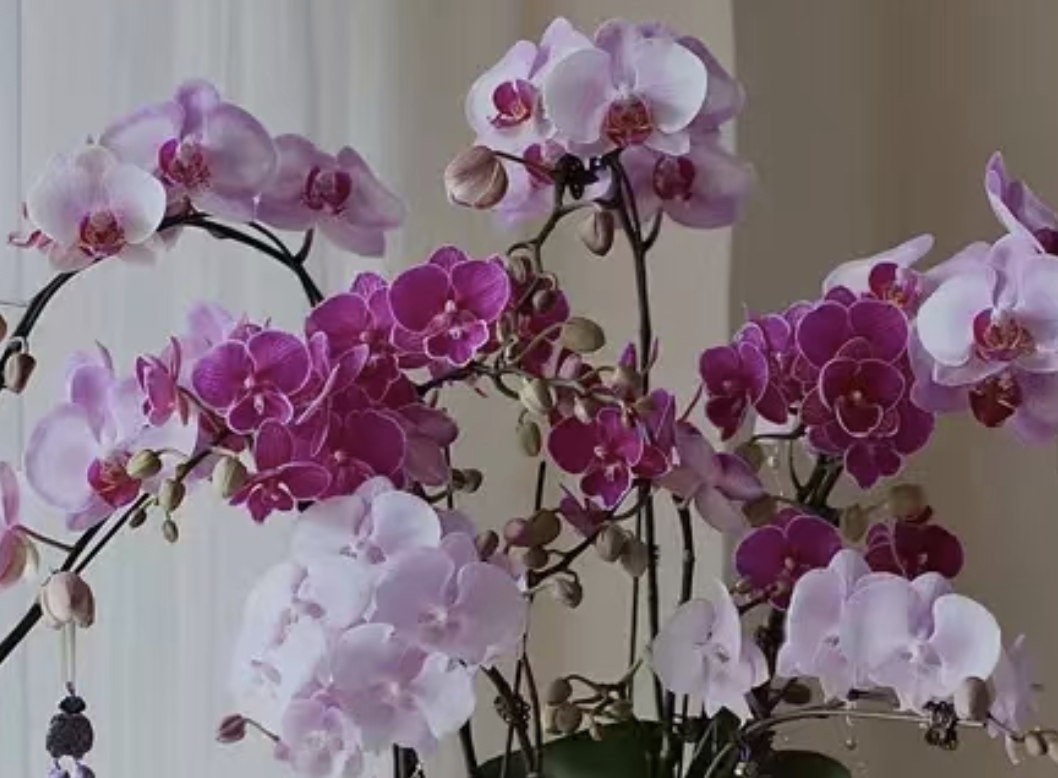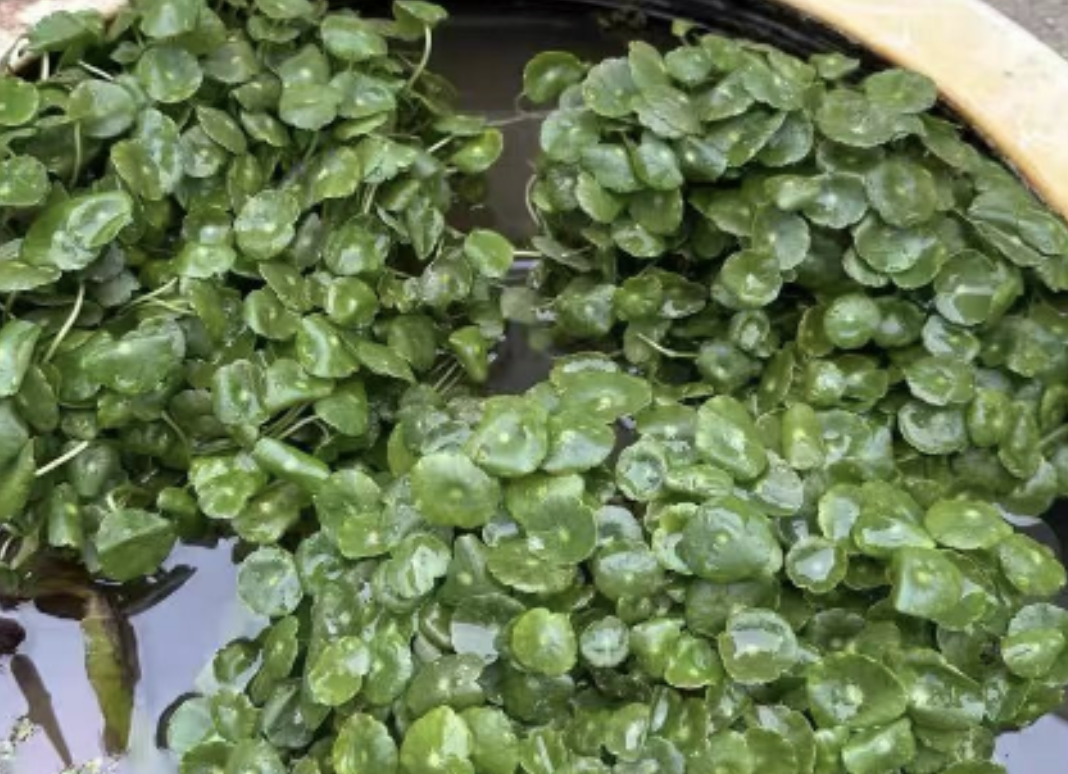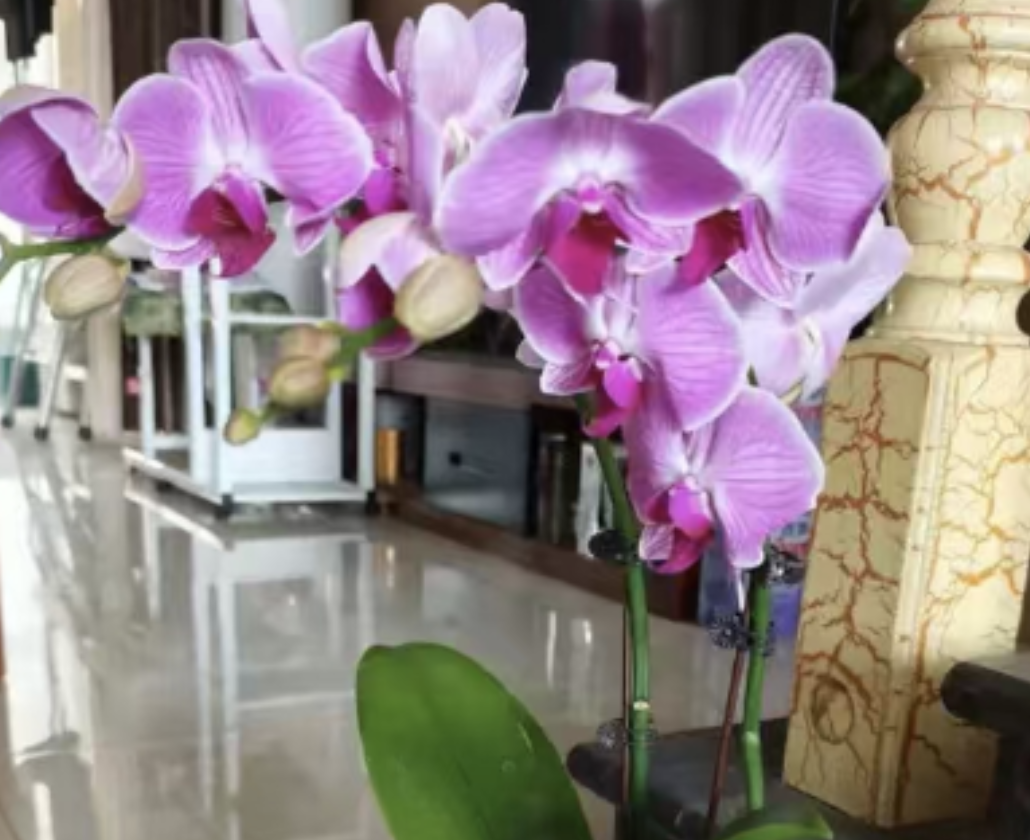Always envy others whose Phalaenopsis blooms like a waterfall? Actually, the care before flowering is the key! Master the "golden ratio" of temperature, light, water and fertilizer, and even beginners can grow buds all over the branches.
Temperature
Phalaenopsis is super sensitive to temperature. To promote flowering, you must strictly control the temperature:
- 26-28℃ during the day: Warm but not hot, just like the temperature in a spring sunroom, which can activate the growth power.
- 16-18℃ at night: It must not be lower than 16℃! Maintaining a temperature difference of 8-10℃ is the key, which is equivalent to giving it the instruction of "it's time to grow flower buds".
- Keep warm in winter: If the room temperature is low, put a transparent heat preservation cover (with ventilation holes) or place it 1 meter away from the heater to ensure that the ambient temperature is not lower than 18℃, otherwise the flower buds will be frostbitten and fall off.
Light
- Duration: 4-6 hours of scattered light every day. The east-facing windowsill before 9 am is perfect, with soft and non-irritating light.
- Intensity: 25000-30000Lux (simply put, the brightness that allows you to read newspapers standing by the window without effort). Use a sunshade net with a 30% shading rate to filter strong light to avoid scorch marks on the leaves.
- Taboo: Western exposure and noon sun must be avoided. Once the leaves are sunburned, the photosynthesis will be weak, making it even harder to bloom!
Water and Fertilizer
- Watering: When the surface of the sphagnum moss turns white, the bark feels dry and hard, or the roots are slightly wilted, you can soak the pot. Put the flowerpot in shallow water and soak for 10 minutes to let the substrate absorb water slowly. Avoid direct pouring to prevent water from flowing into the leaf center and rotting the seedlings. Water once every 3-5 days in spring and autumn, and once every 10-15 days in winter. Water only when the substrate is dry to the touch, and it's better to keep it dry rather than too wet!
- Fertilization: When you see small protrusions in the leaf axils (a sign of flower buds), you can start fertilizing. Use 1000 times liquid of potassium dihydrogen phosphate (1 gram of fertilizer mixed with 1 liter of water) once every 10 days. It can be applied to the roots or sprayed on the back of the leaves for faster absorption. Stop fertilizing when the flower stem grows to about 15 cm, otherwise, too much fertilizer will make the flower buds wither early!
Substrate
- Substrate formula: Sphagnum moss + pine bark = 3:2. Sphagnum moss retains water and bark is breathable. After mixing, it can be scattered when kneaded into a ball, without hardening or water accumulation. Repot once every spring. When repotting, cut off rotten roots and empty roots, apply carbendazim to the wounds for disinfection, and dry them for 1 day before repotting.
- Humidity control: The most comfortable air humidity is 60-80%. Too dry air will make the leaves wrinkle and the flower buds shrivel.
- When it's dry, put a shallow tray of water next to the flowerpot (put bricks under it, don't let the flowerpot soak in water), or turn on a humidifier and spray the surrounding air 1-2 times a day. Never spray directly on the flower buds and leaves, otherwise they will rot.
If you take care of it according to this method, you can see the flower stem emerge in about 1-2 months, and slowly grow into a "flower spike" covered with flower buds. After flowering, move it to a slightly cooler place (around 20℃), and the flowering period can last as long as 2-3 months!
How to care for Phalaenopsis before it blooms?

Share with
Tagged in :




Leave a Reply